Reading proficiency Normal Alphabet Worksheets for Ages 4-9
7 filtered results
-
From - To
Unlock the door to reading success with our Reading Proficiency Normal Alphabet Worksheets, designed for children ages 4-9. Each worksheet fosters essential reading skills through engaging, developmentally-appropriate activities tailored to your child’s age group. From basic letter recognition to fluency improvement, our worksheets support gradual learning progression. Fun exercises and colorful illustrations keep young learners motivated and excited about reading. Perfect for home or classroom use, these resources are ideal for enhancing your child’s reading proficiency. Provide a strong foundation for your child's educational journey with our expertly crafted worksheets—where learning and fun go hand-in-hand!
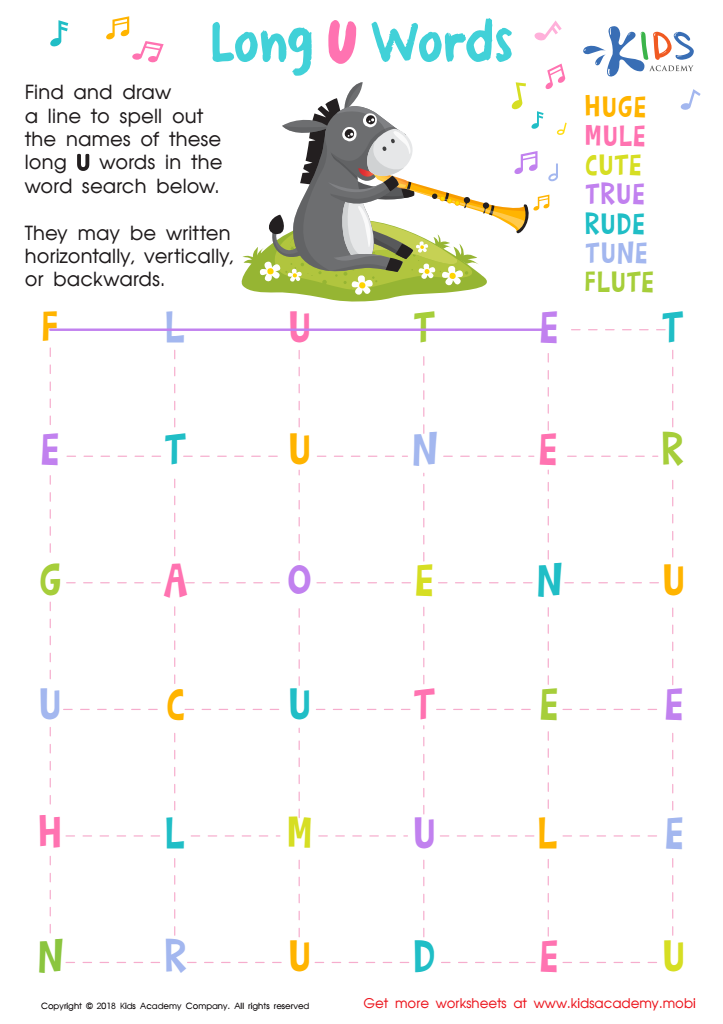

Long /u/ Words Worksheet
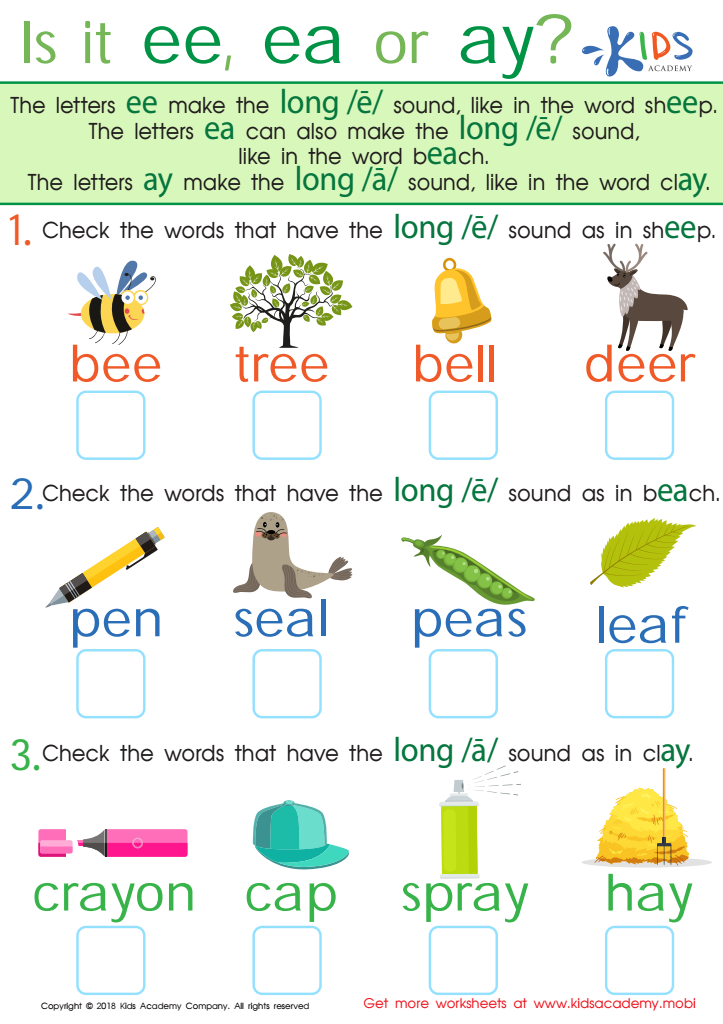

Is It EE, EA, or AY? Worksheet
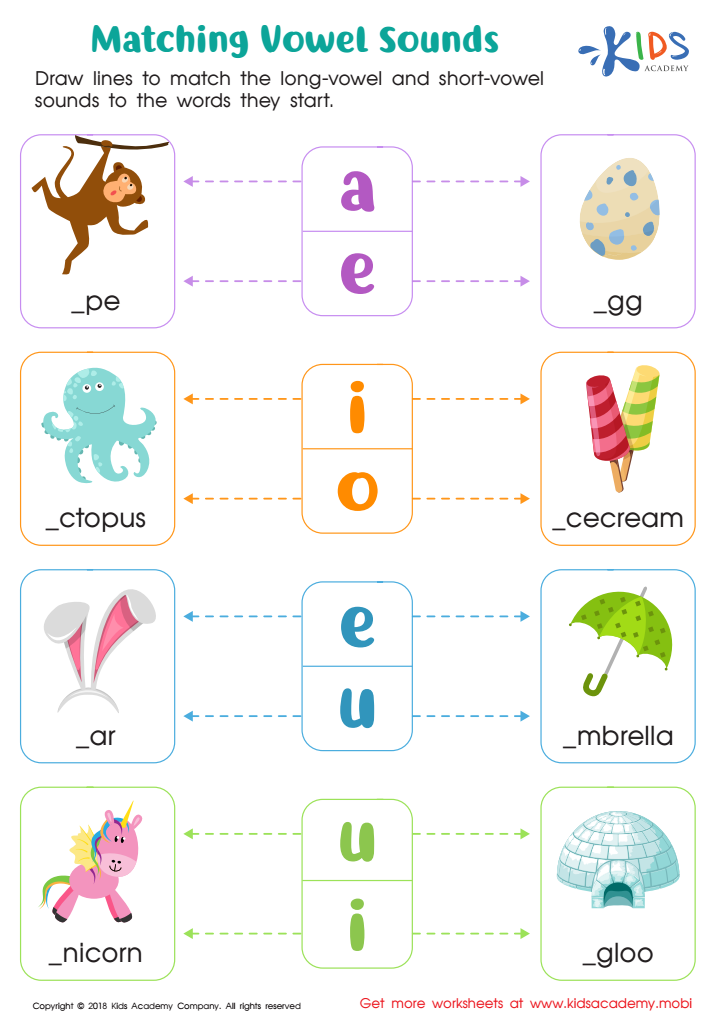

Matching Vowel Sounds Worksheet


Long and Short U Worksheet
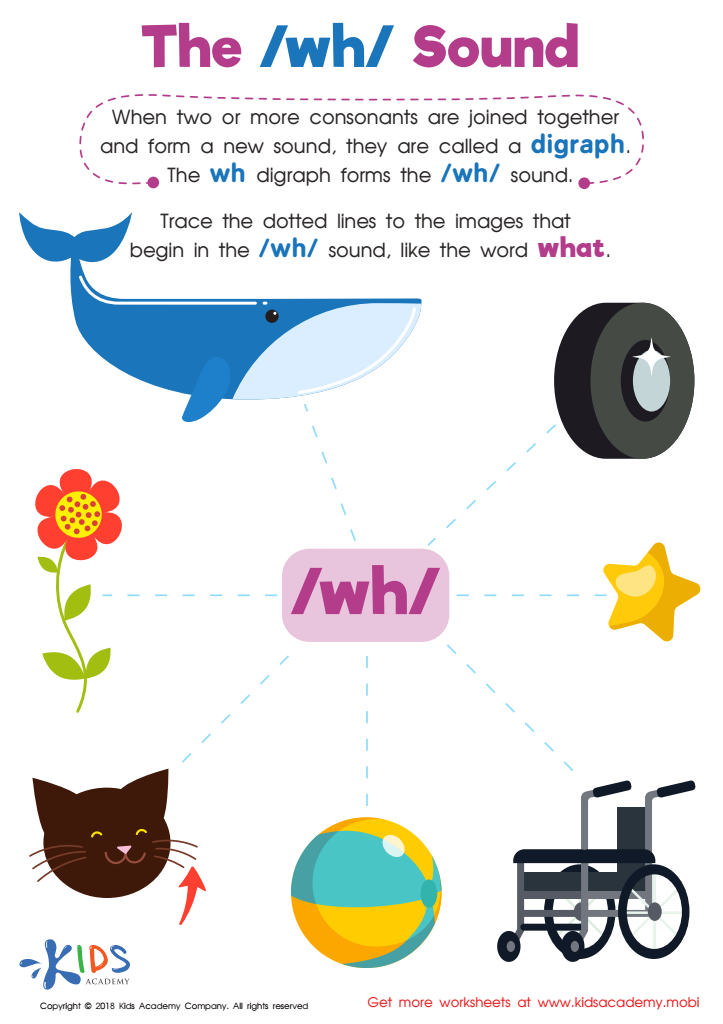

The /wh/ Sound Worksheet
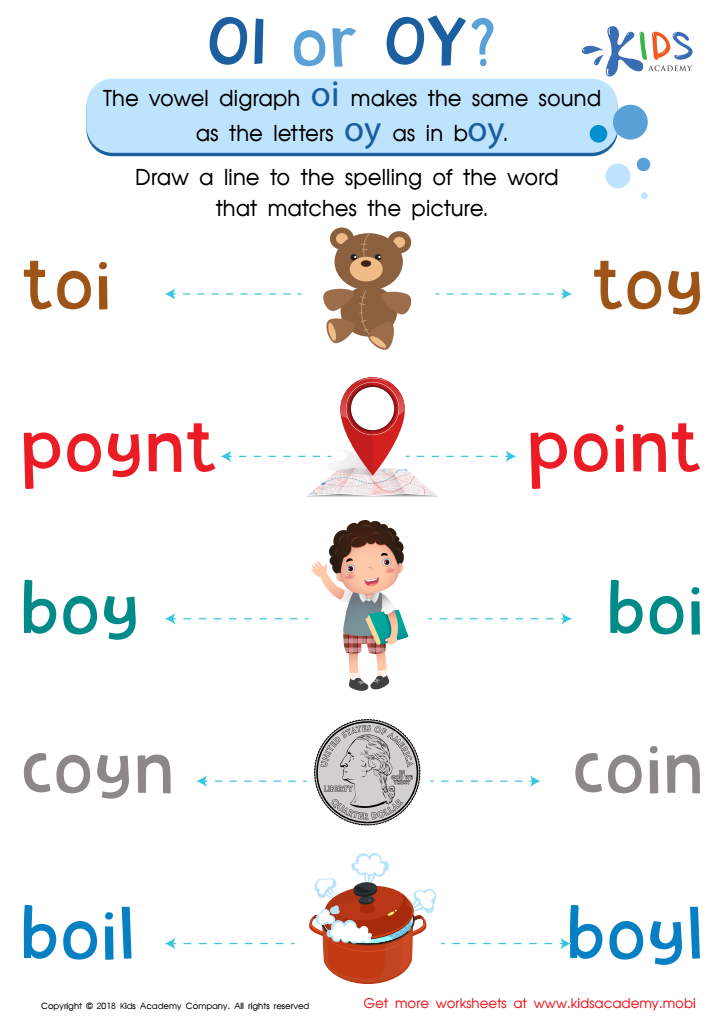

Reading: OI and OY Worksheet
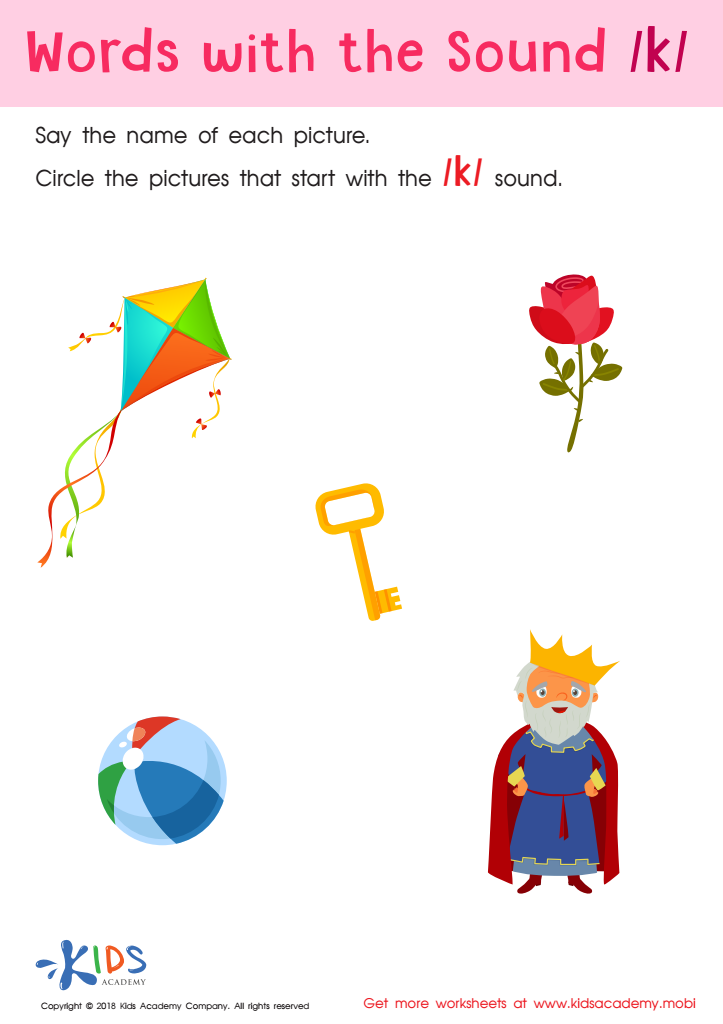

Words with sound k Reading Worksheet
Reading proficiency is a cornerstone of a child's educational development, particularly from ages 4-9 when foundational skills are established. Parents and teachers should prioritize this area for several compelling reasons.
Firstly, reading proficiency underpins learning across all subjects. Early mastery of reading skills enables children to comprehend texts in science, math, and social studies, fostering a smoother, more integrated educational experience. Without strong reading skills, children may struggle to understand and retain information, potentially hindering academic progress.
Secondly, proficient reading positively impacts cognitive development. It enhances vocabulary, comprehension, and critical thinking skills. As children decode words and grasp their meanings, they refine their cognitive abilities, ultimately supporting more advanced intellectual tasks.
Social and emotional growth is another crucial factor. Reading can enhance empathy and cultural awareness by exposing children to diverse perspectives and experiences. Through books, children learn about emotions and social interactions, aiding in their emotional intelligence and social skills.
Finally, early reading success builds confidence and a love for learning. Children who enjoy reading are more likely to develop a lifelong habit that enriches their minds and joy. In sum, attention to reading proficiency from ages 4-9 equips children with essential skills for academic success, cognitive development, and social-emotional growth, laying a foundation for their overall well-being and future achievements.

 Assign to My Students
Assign to My Students













